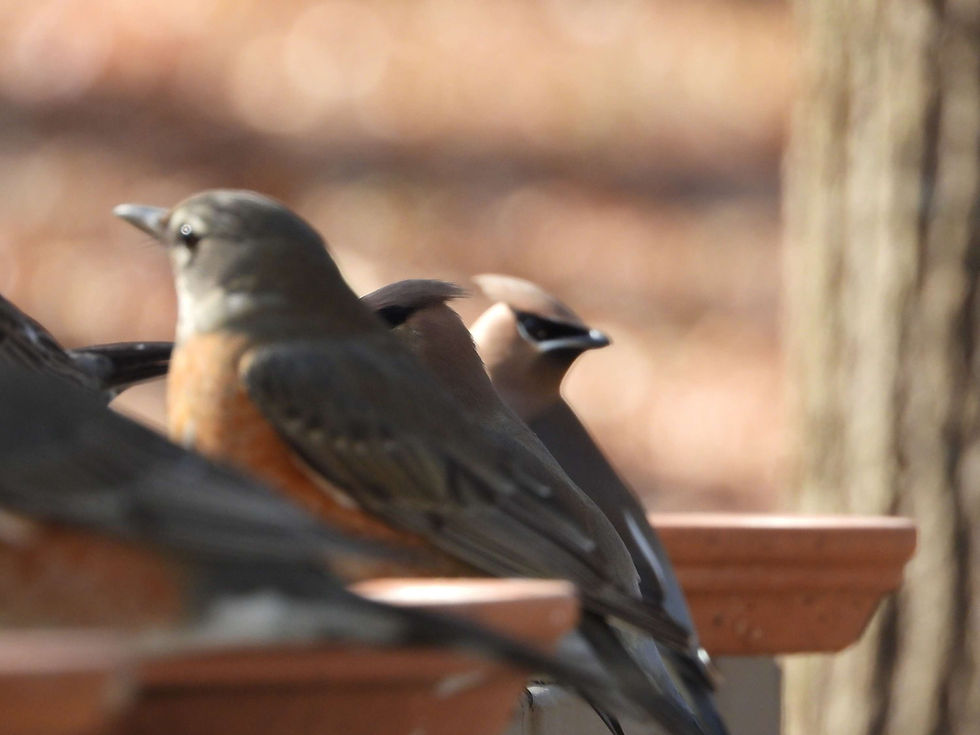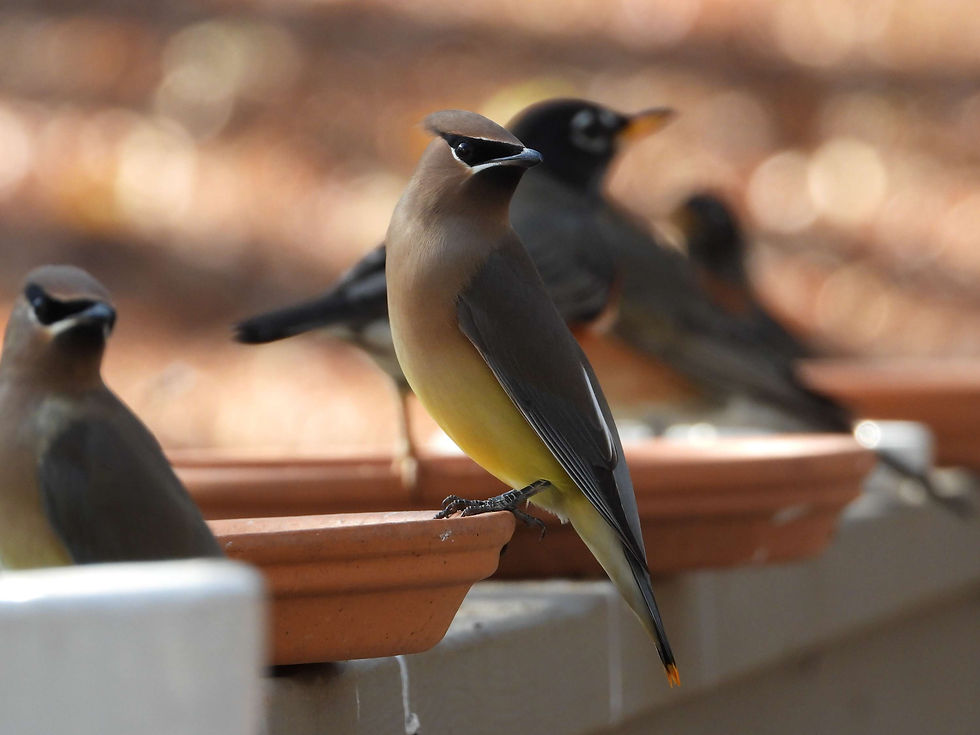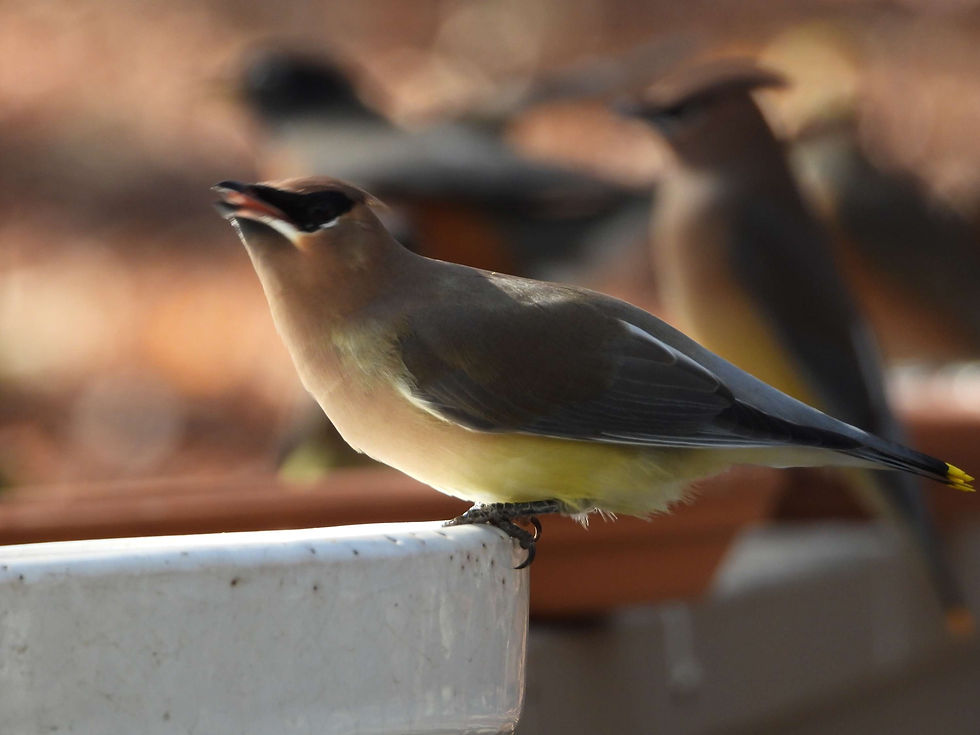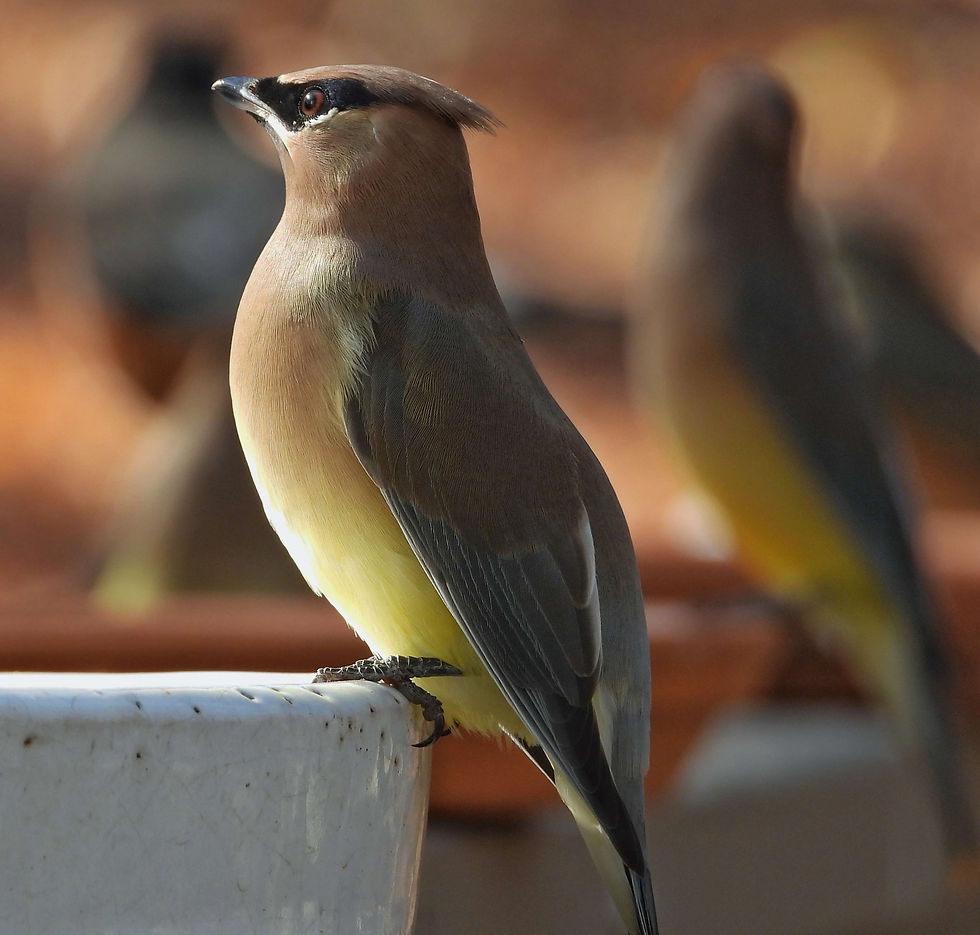In this blog, we share a video and a few photos from our quick Cedar Waxwing Visit.
Above this text is a quick video of a Cedar Waxwing drinking fresh water from a dish on our deck! We change the water out 2x per day typically, as it only requires a Robin, Brown Thrasher or other large bird to make it filthy. The birds need to take baths to wash off dust, mites and soil, but they need to drink it too! So fresh water is a MUST. That is how we attracted these beautiful Cedar Waxwings (We've now seen them in the Winter 3 years in a row!)
Here in Marietta, Georgia we have had a couple of Winters in a row where a flock of American Robins have appeared and basically stay through the Winter months. While they are here we put out a lot of Mealworms and let them eat until they are full, a few times each week. There are a few fights between birds over who gets the best perch or who gets to sit "IN" the mealworm plates instead of "ON" the edge of them. Overall, it's pretty entertaining.

In the midst of this year's edition of the American Robin invasion, I was sitting outside in a hoodie, peering through my camera straight down our deck handrail where the plates of food are placed. I try to catch close-ups of Eastern Bluebirds in the morning light (Which is incredible when it is pulled off) and Yellow-rumped Warblers, Carolina Wrens and occasionally a Towhee or a Brown Thrasher will appear and grab a mealworm also before flying off. It was quite a surprise when I was focusing the camera through the crowd of Robins to find an uncommon visitor peering back at me through the viewfinder. A Cedar Waxwing!

To me, this has always been one of those birds that looks like it came from a different planet, or some sort of sci-fi realm. The colors are so smooth and blend together like they were almost airbrushed that way. They have yellow, brown, black, white, and orange or red tips on their tail feathers as well. Once you have seen one, you'll never forget it.

As I was shooting photos, this particular Cedar Waxwing flew directly toward me and landed within a foot of my Nikon P1000 camera lens. Cedar Waxwings are known to be very social birds and as I slowly pulled my head back from the camera I could see there were now 2 of them perched on the deck railing, blending in with a dozen or more Robins. I heard their high-pitched calls above and realized there were more in the trees of the backyard also! This was super exciting, although I couldn't get a count of the additional birds due to all of the American Robin activity!

Cedar Waxwings sometimes travel in large flocks of 50-100+ birds and Lisa and I have only spotted one of these flocks previously, while staying in a hotel in Grapevine, Texas (near Dallas). From what I have read over the past 10+ years, the number of these birds have been declining. One reason in particular that has come up in my research again and again: Non-native species of plants that have toxic berries. I found an article published some years ago which describes one plant in particular which is used heavily for Landscape design. It is a species of bamboo with ornamental leaves and bright red berries. These plants are called "Nandina". Whatever you do, don't plant these in your yard! Here is the article I was referring to: Link to article
Have you ever seen Waxwings before?
For more information about Cedar Waxwings diet, migration patterns, mating season and more, check out this link for Audubon Society's field guide to Cedar Waxwings.
As always, thanks for reading!

Commentaires